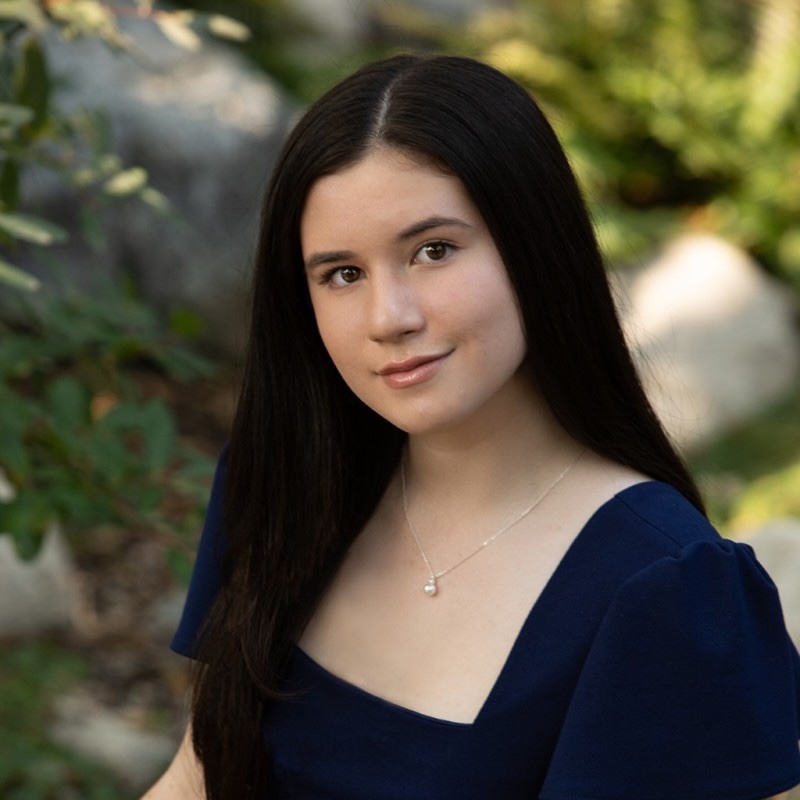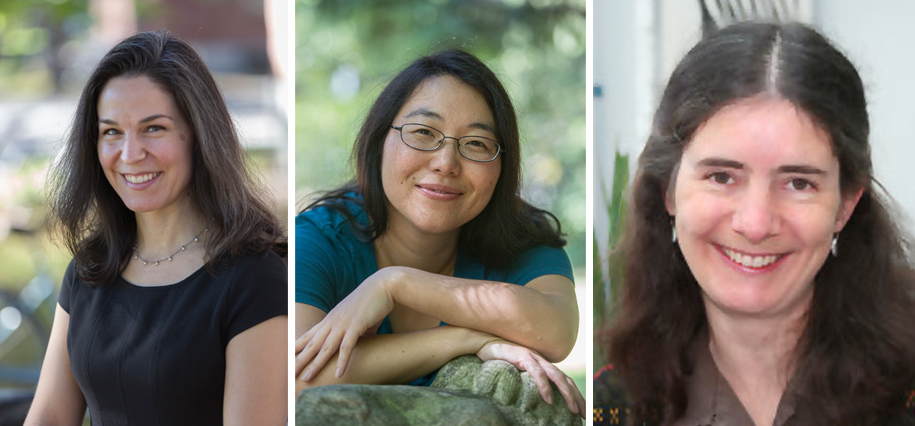In Faculty Labs, Students Pave the Way for Potential Medicines
By Rebecca GoldfineLong before a medicine is introduced on the market there is, often, a drawn-out story of the laborious (but also exhilarating) work of research: toil, dead ends, small breakthroughs, and major epiphanies. To propel this process of discovery, many, many researchers must keep working at a problem, sometimes for decades, making incremental, painstaking discoveries, each one building on the last.
In the brightly lit labs of Druckenmiller Hall, several Bowdoin faculty are in the midst of contributing to this cumulative, collaborative process, helping to forge new insights into biochemistry. Their research won’t necessarily provide a direct link from pure science to newfangled drug, but they are making important contributions to knowledge that could one day abet the creation of cures.
While we have highlighted just three professors and their students in this article — Danielle Dube, Ben Gorske, and Anne McBride — there are many other faculty at Bowdoin whose research could also one day positively impact people’s health.
“It is about the joy of discovery, and sharing that with students” — Danielle Dube
The Bowdoin professors are not doing it alone. Each year, they hire student assistants, both to provide undergraduates a real-life laboratory experience and also to benefit from students’ labor and creativity. The students are supported by Bowdoin grants, such as the Kibbe Science Fellowship, Kufe Family Student Research Fellowship, and the Arnold and Mabel Beckman Foundation Scholarship.
Associate Professor of Chemistry and Biochemistry Danielle Dube, who had a team of four students this summer, said she intentionally chose to work at a small liberal arts college because of her own transformative experience as an undergraduate at Cornell University. “I realized then I personally could contribute in really meaningful ways to what we understand,” she said. “I found that empowering and I wanted to offer those opportunities to my own students one day.”
Still, as much as she gives, she also gets. “We have incredibly talented, capable students that, when given a runway, a project idea, can contribute in ways that are incredibly creative and can help propel a project sometimes in directions I didn’t even see it going.”
Associate Professor of Chemistry and Biochemistry Ben Gorske hired four students this summer. “The primary reason I work with students is because I feel it is really important to give them an experience that gives them a snapshot into what scientific research is like,” he said. “We need people who are interested in and trained in science to pick up where the rest of us leave off, and continue the quest to come up with scientific advances that make our lives better.”
He also enjoys collaborating with undergraduates. “One of the great joys of this vocation is to enable a student to make a discovery,” he said. “It’s just such an awesome experience and such a pleasure to be part of that.”
Associate Professor of Biology and Biochemistry Anne McBride, who worked with six students this summer, said she couldn’t achieve her goals alone. “This summer we are working on three time-intensive projects to understand how molecules are transported from one part of a yeast cell to another,” she explained. “Each project requires experiments that take at least three days to complete. If I were working by myself in the lab, I would need to focus on one or two projects, but collaborating with engaged and motivated students allows the team to make significant progress on three different projects simultaneously.”
Danielle Dube’s lab: Looking at new generation of antibiotics
Dube’s lab is studying the sugars that coat the surface of disease-causing bacteria. Fundamentally, she is trying to understand the biology of these sugar structures: what they are, how they ended up on the bacteria, and how they’re involved in the formation of disease. “Access to those bits of information can ultimately help us develop new antibiotics that can be used to selectively kill or target bacteria based on their distinctive sugar coating,” she said.
Her research comes at a time of when we are in dire need of new antibiotics. Our medical arsenal is limited, Dube said, and organisms that are resistant to current antibiotics can lead to incurable illnesses. Our antibiotics are also not selective, and when they enter a body, they kill not just disease-causing bacteria, but also beneficial bacteria that live in our gut and contribute to our health.
While much of Dube’s research is focused on a specific harmful bacteria called H. pylori, her research potentially has broader applications. “We’re developing a tool kit that can be deployed in any number of systems,” she said. Read more about Dube’s research.
Ben Gorske’s lab: Looking at a day when cancer, Alzheimer’s, and many other diseases are cured
One of the projects in Gorske’s lab is focused on facilitating the discovery of new medicines. “We’re trying to make what we like to call artificial enzymes, molecules that can make certain chemical reactions easier or more controllable, to make desired products more easily,” Gorske said. “And those desired products are often subunits or components of new medicines.”
His second project is contributing to a deeper insight into how diseases work, such as cancer, which relies on cellular signaling processes to develop. A cell’s signaling proteins carry messages between cell parts to help it coordinate its activities, such as cell growth. “And you can imagine that understanding the different signals that control cell growth might be important in understanding the development of cancer, for example,” Gorske said. “And if you understand how that develops on a molecular basis, you could start thinking about molecules that might be able to control those signaling pathways to tell cancer to stop growing.” Read more about Gorske’s research.
Anne McBride’s lab: Looking at a future with no malignant Candida albicans
Candida albicans is a common human fungal pathogen, normally not harmful in healthy people. But in those with compromised immune systems, it can become virulent and potentially fatal.
The McBride lab is focused on a particular moment when Candida albicans transitions from innocuous to pathological, when it morphs from a kind of circular bud to a stringy filament called a hypha. This hyphal form can more firmly adhere to host tissue, making it an effective invader. One way the Candida turns into this attacking filament is by transporting genetic codes to its tip to synthesize new proteins that help the hypha grow and penetrate host cells. McBride is looking into how exactly this process works.
This summer, two of her students — Aimee An ’20 and Zoe Dietrich, ’21 — have been investigating whether a specific protein is involved in moving the attack protein’s mRNA to the hyphal tip. “The more we learn about [messenger] RNA transport, the more we learn about hyphal formation and the more we learn about the virulence of Candida,” Zoe Dietrich ’21 said. “Our lab doesn’t specifically focus on virulence, but what we find out and what we learn can be published and other people can use that to study the disease further.”
Her lab partner, Aimee An ’20 added, “The more we know, the more doors can open for potential therapies.” See more about McBride’s lab.



